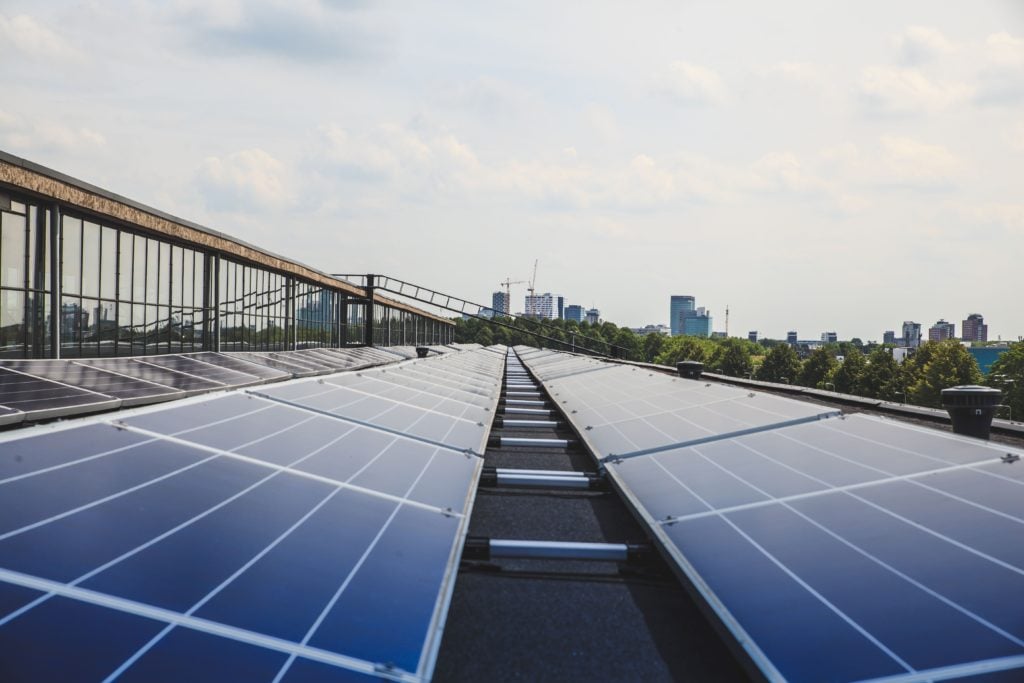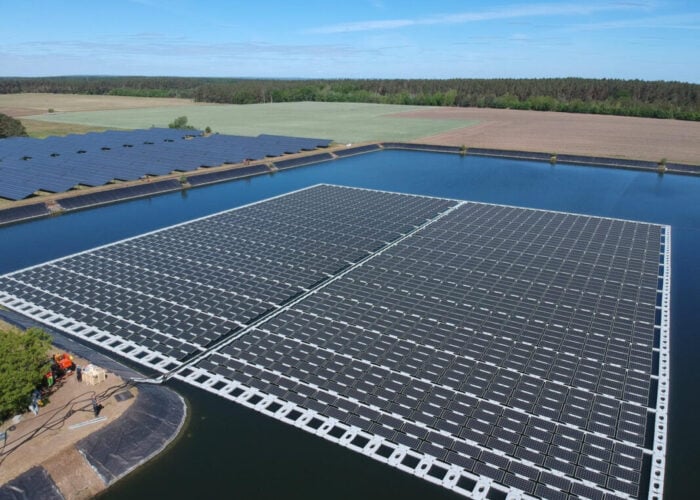
The global solar sector is more aware of the importance of compliance with environmental, sustainability and governance (ESG) standards than ever before. In the last few years, the US alone has passed the Uyghur Forced Labor Prevention Act, which prohibited US companies from importing modules made in China’s Xinjiang region, due to concerns that products are being made by members of the Uyghur group, who have been subjected to forced labour.
This act has had a significant impact on the global solar sector, with German research organisation the Bernreuter Group noting in 2022 that polysilicon produced in Xinjiang accounted for 35% of the world’s polysilicon production, and this weakening of relations between the American and Chinese solar sectors has been echoed in more recent legislation, from the Inflation Reduction Act (IRA) to the anti-dumping and countervailing duty (AD/CVD).
Unlock unlimited access for 12 whole months of distinctive global analysis
Photovoltaics International is now included.
- Regular insight and analysis of the industry’s biggest developments
- In-depth interviews with the industry’s leading figures
- Unlimited digital access to the PV Tech Power journal catalogue
- Unlimited digital access to the Photovoltaics International journal catalogue
- Access to more than 1,000 technical papers
- Discounts on Solar Media’s portfolio of events, in-person and virtual
And, of course, growing tensions between the world’s largest solar markets has had a significant impact on Europe, the market caught, literally, in the middle of the US and China. Namely, European solar companies are being encouraged to consider ESG compliance to a much stricter extent than ever before; just last month, SolarPower Europe published a ‘solar sustainability best practices benchmark’ report into ESG in the European solar sector.
This follows the trade body’s work with the Solar Stewardship Initiative (SSI), a scheme to improve ESG compliance, reporting and transparency across the continent’s solar sector, and this work has helped solidify ESG as a vital consideration for those in Europe, from solar developers and installers to financiers and backers. With ESG regulations more present than ever, these frameworks are no longer merely a list of criteria for new projects to abide by, but an opportunity to build an energy sector that is more sustainable in every sense of the word.
ESG standards in Europe
The European solar sector is already highly regulated, with a number of initiatives affecting the work of companies across the sector. The SSI, for instance, is coordinated by SolarPower Europe, alongside UK-based firms TDI Sustainability and Solar Energy UK, and counts a number of industry leaders among its members, including Chinese module manufacturing giant Trina Solar and Spanish utility Iberdrola.
This emphasis has created a market where ESG compliance is considered a priority by many, who fill a number of roles within the industry, according to Michelle Davies, a partner and global head of sustainability law at Ernst & Young.
“Long gone are the days when simply being a renewable energy participant, and particular developer, was sustainable; that isn’t the case now,” says Davies. “So, yes, there is a real heightened focus on this.”
“Partly because of regulation – carrots-and-sticks regulation and incentives that are being given by certain countries, [such as] the IRA in the US [and] the EU’s Corporate Sustainability Reporting Directive (CSRD) and all this other regulation in Europe – [regulators] are, depending on how you look at it, encouraging or forcing the development of alternative sources of supply for the products and materials that go into solar, so that the solar industry cannot just be reliant on where it has sourced those materials historically,” says Davies.
The CSRD is the European Commission’s programme to force European firms to report on their ESG compliance, and came into force at the beginning of this year. The directive now requires small- and medium-sized companies to report on their sustainability credentials, with the first report to be published in 2025, covering the 2024 financial year, and is a clear indication of the importance of ESG compliance to European leadership.
Much of this concern in the solar sector is tied to Europe’s relationship with China in particular, and Davies notes that a continued relationship with China is difficult to maintain in an age of greater ESG awareness, considering the lack of transparency in the Chinese supply chain.
“It’s not easy because if you think of where a lot of the materials that go into solar panels come from, it’s very difficult to do due diligence,” says Davies. “And then, where do you go? Where are the alternatives?”
“That’s why you’re seeing governments taking steps to encourage, or force, that alternative supply chain and it will be transitional, but that is, most certainly, what’s happening.”
ESG compliance versus financial viability
Of course, the idea of relocating solar manufacturing capacity from China to Europe, to expose more of the continent’s solar supply chain to higher standards of ESG compliance and reporting, is practically very challenging. A report from Wood Mackenzie noted that China is aiming to expand its annual solar cell manufacturing capacity to more than 1TW, whereas SolarPower Europe hopes for Europe to have annual manufacturing capacity to just 30GW by 2025, orders of magnitude smaller.
Critically, it is also far cheaper to produce modules in China than elsewhere in the world, with Wood Mackenzie reporting that a Chinese module costs 50% less to build than the same module made in Europe, and 65% less than in the US. As a result, the solar sector faces something of a dilemma: acquire modules at a price low enough, and on a scale large enough, to meet the continent’s ambitious energy transition goals; or produce modules less financially efficiently, and on a scale that will all but certainly mean Europe will miss its solar generation targets.
“Everything has to be financially viable,” says Davies, acknowledging this challenge. “In an ideal world, Europe would be doing something similar to the US and providing significant incentives for manufacturing to relocate to Europe. Whereas what Europe is predominantly doing is exercising regulatory compliance as a means to get to where it needs to on this.
“Therefore, that doesn’t necessarily help the price point in maybe the same way the price point could be assisted in the US. The bottom line is [that] these projects will only get built if it makes financial sense for them to be built.”
Yet this is not to say that this is an impossible choice, or a decision to be made between completely opposing results. Davies noted that the interconnected nature of the European solar sector, with a range of cell manufacturers, project installers and financial backers, means that even greater awareness of the importance of ESG will lead others in the sector to realign their priorities and push the sector, as a whole, to more profitable and ESG-compliant operations.
“It’s already having an effect with the companies it directly applies to and it will, if companies are not directly impacted, indirectly [affect them] in terms of the trickle-down effect,” says Davies, of the regulation already in place in the European solar sector.
Opportunities for Europe
Indeed, Davies went on to suggest that ESG compliance should not be considered an obstacle for solar developers – a series of rules and arbitrary obligations to meet in order to be given access to land and funding – but an opportunity to work in a new way, to help fundamentally change the continent’s energy mix, and approach to meeting its power demand.
“I think it is a huge opportunity, but it is an opportunity that comes with significant challenges,” says Davies, noting that ensuring Europe can operate ethically and financially effectively will be a key challenge. “China is producing solar panels at a price point, which enables these projects to be able to operate in a financially viable way. And that is a challenge, being able to get the price point down to the same point [in Europe].”
“I’ve been in the sector long enough to know that the sector always finds a way,” adds Davies, pointing to other ways in which the European solar industry has changed. “I remember when Europe and the UK removed subsidies and we thought: ‘How is this market going to be able to continue without subsidies? The market is too unstable, to support long-term power purchase agreements (PPAs).’ And then the market adapted.”
This appetite for innovation could be seen in some of the more innovative approaches to solar deployment in Europe, where the industry is less calcified than in regions such as the US. In December, SolarPower Europe published a report into floating PV, which found that covering just 10% of Europe’ hydropower reservoirs would add 157GW of new solar capacity to the continent’s energy mix; and in July, a research found that Europe had the potential to install 51TW of new solar capacity in the agrivoltaics sector alone, a volume of power that would single-handedly meet Europe’s electricity demand 25 times over.
The use of emerging technologies, and the compliance with more stringent ESG standards, could help the European solar sector become more sustainable, not simply in terms of minimising its carbon emissions, but becoming a fairer, more replicable and more financially lucrative sector in the long-term.
“When I refer to sustainability, I mean sustainability in the widest sense, not just environmental sustainability,” says Davies, who pointed to the deployment of AI, land use and ensuring biodiversity as oft-overlooked aspects of ‘sustainability’ that form a key component of ESG compliance.
Davies refers to this wider definition of sustainability, and concludes that: “[investors are] going to be increasingly concerned to make sure that if they are investing in solar projects, that those solar projects themselves are sustainable.”
Our publisher Solar Media is hosting the 11th Solar Finance & Investment Europe conference, 31 January – 1 February at Park Plaza in London, where Michelle Davies, among others, will be speaking. Discussion topics will include renewable capital allocation, scaling European solar and maximising returns for solar-plus-storage projects. See the official site for more details.







